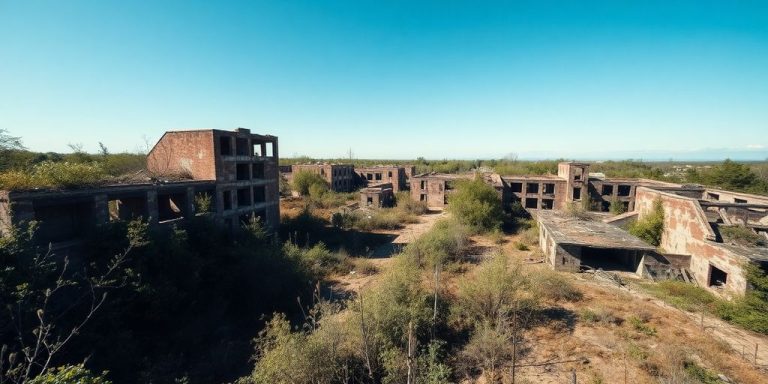
Definition of Asbestos
Asbestos is a naturally occurring mineral that was widely used in construction and manufacturing for much of the 20th century. Its heat resistance and durability made it a popular choice, but it’s now known to be extremely hazardous. Asbestos is a group of minerals composed of flexible fibers that are resistant to heat, electricity, and corrosion. There are several types of asbestos, including:
- Chrysotile (white asbestos)
- Amosite (brown asbestos)
- Crocidolite (blue asbestos)
Historical Use of Asbestos in Military
The military used asbestos extensively in building construction, ship construction, and vehicle manufacturing. It was a cheap and effective way to fireproof and insulate equipment and facilities. You could find it in:
- Insulation for pipes and boilers
- Building materials like roofing and flooring
- Vehicle parts such as brake linings
Because of its widespread use, many veterans were exposed to asbestos without their knowledge. California veterans impacted by asbestos are a key example of this widespread exposure.
Health Risks Associated with Asbestos Exposure
Exposure to asbestos can lead to serious health problems, some of which may not appear for decades after the initial exposure. The most well-known and severe health risks include mesothelioma, lung cancer, and asbestosis. These conditions are caused by inhaling asbestos fibers, which can become lodged in the lungs and other organs. The health risks include:
- Mesothelioma: A rare and aggressive cancer affecting the lining of the lungs, abdomen, or heart.
- Lung Cancer: A type of cancer that can develop after asbestos fibers damage lung tissue.
- Asbestosis: A chronic respiratory disease that causes scarring of the lungs, leading to shortness of breath and other complications. Veterans can explore VA benefits for asbestos-related illnesses.
Common Locations of Asbestos in Military Facilities
Barracks and Living Quarters
Asbestos was all over the place back then, and military barracks were no exception. Think about it: these buildings needed to be durable and fire-resistant, and asbestos seemed like the perfect solution at the time. It’s really unfortunate that we now know the dangers. You could find it in:
- Insulation around pipes and walls
- Floor tiles and adhesives
- Cement used in the building’s structure
It’s a real bummer to think about the potential exposure veterans may have faced just by living in their assigned quarters.
Maintenance and Repair Areas
Garages, workshops, and other maintenance areas were hotspots for asbestos. These were the places where things got fixed, and that often meant disturbing asbestos-containing materials. Some common locations included:
- Brake linings and clutch facings
- Insulation on machinery and equipment
- Gaskets and packing materials
Mechanics and repair personnel were especially at risk because they were constantly working with these items. It’s not hard to imagine how much dust they inhaled over the years.
Training Grounds and Equipment
Even training grounds weren’t safe. Asbestos could be found in:
- Protective gear, like gloves and aprons
- Simulated buildings used for training exercises
- Certain types of vehicles and equipment
Think about fire training exercises, for example. If the buildings used for these drills contained asbestos, firefighters could have been exposed. It’s a scary thought, considering how much asbestos was commonly used in construction.
Regulations Surrounding Asbestos in the Military
Federal Regulations on Asbestos
The use of asbestos is heavily regulated, and for good reason. It’s not like you can just throw it around anymore. The Environmental Protection Agency (EPA) and other federal agencies have put rules in place to control how asbestos is handled, from mining to disposal. These federal regulations aim to protect people from the dangers of asbestos exposure. It’s a big deal, and the rules are pretty strict. You can’t just ignore them. There are a lot of rules, and they’re always changing, so it’s important to stay up-to-date.
Military Protocols for Asbestos Management
The military has its own set of rules for dealing with asbestos, which are often stricter than the general regulations. They have to be, considering how much asbestos was used in military construction. These protocols cover everything from identifying asbestos-containing materials to safely removing and disposing of them. The military also has training programs to teach personnel how to handle asbestos safely. It’s a whole system designed to minimize the risk of exposure. It’s not perfect, but they’re trying. The military’s asbestos management is a complex issue.
Impact of Regulations on Veterans
The regulations surrounding asbestos have a big impact on veterans. Many veterans were exposed to asbestos during their service, and these regulations are supposed to help protect them. The rules also affect their ability to get compensation if they develop an asbestos-related illness. It’s a complicated situation, and many veterans feel like they’re not getting the support they need. The government is trying to do better, but there’s still a lot of work to be done. The health of veterans is at stake. Here are some ways regulations impact veterans:
- Access to healthcare
- Eligibility for disability benefits
- Legal recourse for exposure
Identifying Asbestos-Related Health Conditions
Mesothelioma and Lung Cancer
Mesothelioma and lung cancer are two of the most severe health conditions linked to asbestos exposure. Mesothelioma is a rare and aggressive cancer that affects the lining of the lungs, abdomen, or heart. Lung cancer, while more common, can also be directly caused or worsened by asbestos fibers inhaled into the lungs. It’s important to remember that the latency period between exposure and diagnosis can be decades, making early detection challenging.
Asbestosis and Other Respiratory Diseases
Asbestosis is a chronic respiratory disease caused by the scarring of lung tissue due to inhaled asbestos fibers. This scarring makes it difficult to breathe and can lead to other complications. Other respiratory diseases associated with asbestos exposure include:
- Pleural plaques: Thickening of the lining around the lungs.
- Pleural effusion: Fluid buildup around the lungs.
- Chronic obstructive pulmonary disease (COPD): A group of lung diseases that block airflow and make it difficult to breathe. chemical hazards can lead to respiratory issues.
Symptoms of Asbestos-Related Illnesses
Recognizing the symptoms of asbestos-related illnesses is crucial for early diagnosis and treatment. Symptoms can vary depending on the specific condition but often include:
- Shortness of breath: Difficulty breathing, especially during physical activity.
- Persistent cough: A cough that doesn’t go away and may worsen over time.
- Chest pain: Discomfort or pain in the chest area.
- Fatigue: Feeling tired or weak all the time.
- Weight loss: Unexplained loss of weight. Veterans should be aware of the increased risk of asbestos-related diseases.
Veterans’ Rights Regarding Asbestos Exposure
VA Benefits for Asbestos-Related Illnesses
Okay, so let’s talk about what veterans can actually get if they’ve been exposed to asbestos and got sick because of it. The Department of Veterans Affairs (VA) offers a bunch of benefits, but it can be a real maze to figure out. Basically, if a veteran can prove they were exposed to asbestos during their military service and now have an illness like mesothelioma or lung cancer, they might be eligible for disability compensation, healthcare, and even a monthly pension. The amount of compensation depends on the severity of the disability. It’s not always a slam dunk, though. The VA will look at medical records, service records, and sometimes even require additional exams to confirm the connection between the asbestos exposure and the illness. It’s a process, but definitely worth pursuing if you think you qualify. You can also get help with asbestos claims through the VA.
Legal Rights for Exposed Veterans
This is where things get a little tricky. Unlike civilian workers who can often sue their employers for asbestos exposure, veterans usually can’t sue the military directly. The government has something called sovereign immunity, which protects it from many lawsuits. However, veterans do have other legal avenues they can explore. They might be able to file claims against the manufacturers of asbestos-containing products that the military used. These companies knew about the dangers of asbestos but didn’t warn anyone. These lawsuits can help veterans get compensation for medical expenses, lost income, and pain and suffering. It’s a complex area of law, so it’s really important to talk to a lawyer who specializes in asbestos litigation to understand all your options.
Resources for Veterans Seeking Help
Finding the right resources can make a huge difference when dealing with asbestos-related illnesses. There are a ton of organizations out there that can help veterans navigate the VA system, find legal assistance, and connect with other veterans who are going through the same thing. Here are a few places to start:
- Veteran Service Organizations (VSOs): Groups like the American Legion and the Veterans of Foreign Wars (VFW) have experts who can help veterans file VA claims and understand their benefits.
- Asbestos-Specific Advocacy Groups: Organizations like the Mesothelioma Applied Research Foundation offer information, support, and resources specifically for people with mesothelioma and their families.
- Government Agencies: The VA itself has resources and programs to assist veterans with asbestos-related illnesses. Check out their website or visit a local VA office to learn more.
Don’t be afraid to reach out and ask for help. There are people who care and want to support you through this.
Preventive Measures for Asbestos Exposure
Asbestos Abatement Procedures
Asbestos abatement is a big deal, and it’s all about getting rid of asbestos-containing materials safely. It’s not just a matter of ripping stuff out; there’s a whole process. First, you need to identify where the asbestos is. Then, you have to contain the area to stop fibers from spreading. The actual removal has to be done by trained professionals using specialized equipment. After removal, there’s a cleanup and disposal process that follows strict guidelines. It’s a complex job, but it’s essential for keeping people safe. The program focuses on minimizing exposure to toxic substances through regular inspections, risk assessments, and abatement procedures.
Personal Protective Equipment (PPE)
When dealing with asbestos, PPE is non-negotiable. We’re talking about things like respirators, which filter out the dangerous fibers. Then there are the coveralls, which protect your clothing and skin. Don’t forget gloves and eye protection either. Proper training on how to use and dispose of this equipment is also key. If the PPE isn’t used correctly, it’s basically useless. It’s like wearing a seatbelt; it only works if you buckle up right.
Training and Awareness Programs
Training and awareness programs are super important. People need to know what asbestos is, where it might be hiding, and what the risks are. These programs should cover:
- How to identify asbestos-containing materials
- Safe work practices to minimize exposure
- Proper use of PPE
- Emergency procedures in case of accidental release
It’s not enough to just hand someone a pamphlet; there needs to be real, hands-on training. Regular refresher courses are also a good idea, because things change, and people forget stuff.
Historical Military Bases with Known Asbestos Issues
Case Studies of Affected Bases
Many military bases across the United States have a history of asbestos use, leading to significant health concerns for veterans and civilian workers. These bases, constructed and maintained throughout the 20th century, often incorporated asbestos-containing materials in various structures. For example, Camp Lejeune in North Carolina has documented instances of asbestos exposure due to aging infrastructure. Similarly, the former Naval Air Station Alameda in California, now undergoing redevelopment, presents challenges related to asbestos abatement. These cases highlight the widespread nature of the problem and the need for ongoing monitoring and remediation efforts.
Impact on Local Communities
The presence of asbestos on military bases doesn’t just affect those who served; it also impacts the surrounding communities. Asbestos fibers can migrate from the base through air and water, potentially exposing residents to health risks. This can lead to:
- Decreased property values near contaminated sites.
- Increased healthcare costs for local residents.
- Erosion of trust between the community and the military.
Addressing these issues requires transparency and collaboration between the military, local governments, and community organizations. It’s a tough situation, and it’s not always clear who’s responsible for what. The Navy veterans are particularly at risk.
Long-Term Monitoring and Remediation
Dealing with asbestos is a long game. It’s not a one-time fix. Long-term monitoring and remediation programs are essential to mitigate the risks associated with asbestos on military bases. These programs typically involve:
- Regular air and soil testing to detect asbestos fibers.
- Implementation of asbestos products abatement procedures to remove or encapsulate asbestos-containing materials.
- Medical surveillance programs for individuals with potential exposure.
These efforts are crucial for protecting the health of veterans, civilian workers, and the surrounding communities. It’s a big job, and it requires a sustained commitment from the government and the military. It’s about making sure people are safe, and that’s something we can all agree on.
Legal Actions and Asbestos Litigation
Filing Claims for Asbestos Exposure
When veterans get sick from asbestos exposure during their service, they often wonder about their legal options. It’s not always straightforward, but there are paths to seek compensation. The first step usually involves filing a claim, which can be complex and requires detailed documentation. You’ll need to gather evidence showing where and when the exposure happened, and how it connects to the illness. This might include:
- Military records
- Medical diagnoses
- Testimony from fellow service members
It’s a good idea to talk to a lawyer who knows about asbestos cases. They can help figure out the best way to proceed and make sure all the paperwork is correct. Air Force veterans can seek legal claims against manufacturers of asbestos-containing products in addition to their VA benefits.
Class Action Lawsuits
Sometimes, many people who have similar asbestos-related illnesses join together to file a class action lawsuit. This happens when a large group of individuals were exposed to asbestos by the same company or at the same location. The advantage of a class action is that it pools resources and can be more effective than individual lawsuits. However, it also means that any settlement is divided among many people, potentially reducing the amount each person receives. It’s a trade-off. Class actions can be useful because:
- They consolidate many similar cases.
- They can increase the pressure on the defendant.
- They share the costs of litigation.
Challenges in Asbestos Litigation
Asbestos litigation can be really tough. One of the biggest problems is that asbestos-related diseases can take decades to show up. This makes it hard to prove exactly when and where the exposure happened. Companies that made asbestos products have often gone bankrupt or reorganized, which can complicate things. Also, there can be legal battles over who is responsible and how much compensation should be paid. Veterans exposed to asbestos during military service may develop mesothelioma. They have the right to seek compensation through lawsuits and asbestos trust fund claims. Some common challenges include:
- Establishing a clear link between exposure and illness.
- Dealing with bankrupt companies.
- Navigating complex legal procedures.
Support Networks for Affected Veterans
Veteran Support Organizations
It’s important for veterans dealing with asbestos-related illnesses to know they’re not alone. Several organizations are dedicated to providing support. These groups often offer a range of services, from connecting veterans with medical professionals to helping them understand their VA benefits. Some organizations also focus on raising awareness about asbestos exposure and advocating for veterans’ rights. Finding the right support group can make a significant difference in a veteran’s quality of life.
Online Resources and Communities
The internet offers a wealth of information and support for veterans affected by asbestos. Online forums and communities can be a great way to connect with other veterans who understand what you’re going through. These platforms often provide:
- A space to share experiences and advice
- Information on treatment options
- Updates on legal and legislative developments related to asbestos exposure
Counseling and Health Services
Dealing with an asbestos-related illness can take a toll on a veteran’s mental and emotional well-being. Access to counseling and health services is crucial. Many VA facilities offer specialized programs for veterans with these conditions. Additionally, some non-profit organizations provide health services and mental health support tailored to the needs of veterans and their families. These services can help veterans cope with the challenges of their illness and improve their overall quality of life.





